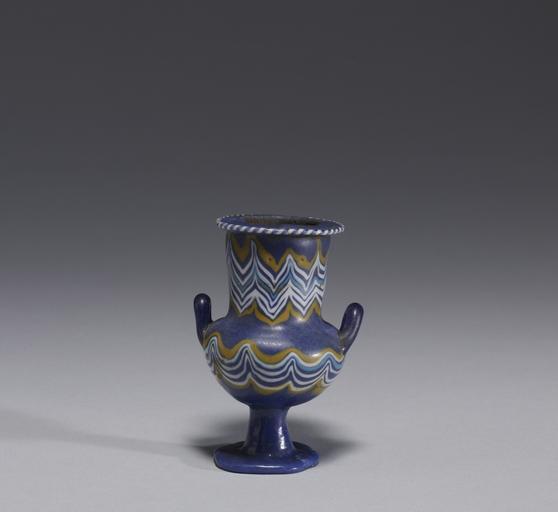MAKE A MEME
View Large Image

| View Original: | Egyptian_-_"Malqata_Kateriskos"_Vessel_-_Walters_4732.jpg (1800x1653) | |||
| Download: | Original | Medium | Small | Thumb |
| Courtesy of: | commons.wikimedia.org | More Like This | ||
| Keywords: Egyptian - "Malqata Kateriskos" Vessel - Walters 4732.jpg Although the manufacture of faience can be traced back to the predynastic period the fourth millennium BCE the production of true glass did not emerge in Egypt until the early 18th Dynasty around 1500 BCE Recent excavations and technical analysis support the hypothesis that the technology of glassmaking was imported from western Asia Both raw glass in the form of large ingots and finished vessels were likely imported at an early stage as were the artisans themselves Within a short time however the Egyptians had developed a highly sophisticated industry that flourished under Amenhotep III 1390-1352 BCE and his successor Akhenaten 1352-1336 BCE Polychrome glass seems to have been particularly esteemed by the court; large numbers of vessels have been found in the tombs of 18th Dynasty pharaohs The contents of many glass flasks-fragrant essences dissolved in plant-based oils-confirm their status as objects of high luxury In addition to its use in jewelry amulets inlays and architectural decoration glass was used for vessels particularly distinctively shaped perfume bottles The two most common shapes take their names from distinctive types of Greek pottery amphoriskos little amphora and krateriskos little krater The Walters amphoriskos Walters 47 31 broad shouldered with a rounded base has an opaque white ground; this krateriskos has a cobalt blue body decorated with white yellow and light blue bands two horizontal handles applied to the shoulder and a wide foot Both are core-formed vessels; the technology of blown glass was as yet unknown The molten mass composed of silica and natron heated to a temperature of around 1000º-1150º C was wrapped around a clay or dung core that was later removed Decorative bands were formed by pressing threads of colored glass onto the molten surface; combing the threads with a metal tool created decorative patterns ca 1450 1350 BC New Kingdom glass H 3 1/8 x W 2 3/16 x Diam 1 7/8 in 8 x 5 6 x 4 8 cm accession number 47 32 39843 Henry Walters Baltimore date and mode of acquisition unknown Walters Art Museum Henry Walters Acquired by Henry Walters An Exhibition of the Treasures of The Walters Art Gallery The Walters Art Museum Baltimore; Pace Wildenstein Gallery New York; Smith College Museum of Art Northampton 1967 3000 Years of Glass Treasures from The Walters Art Gallery The Walters Art Gallery Baltimore 1982 Egypt's Dazzling Sun Amenhotep III and His World The Cleveland Museum of Art Cleveland; Kimbell Art Museum Fort Worth; Galeries nationales du Grand Palais Paris 1992-1993 place of origin Malkata present-day Western Thebes Egypt Walters Art Museum license Glassware in the Walters Art Museum Ancient Egyptian glassware Ancient Egyptian pottery in the Walters Art Museum Ancient Egyptian art from Malkata Media contributed by the Walters Art Museum needs category review Cobalt glass | ||||